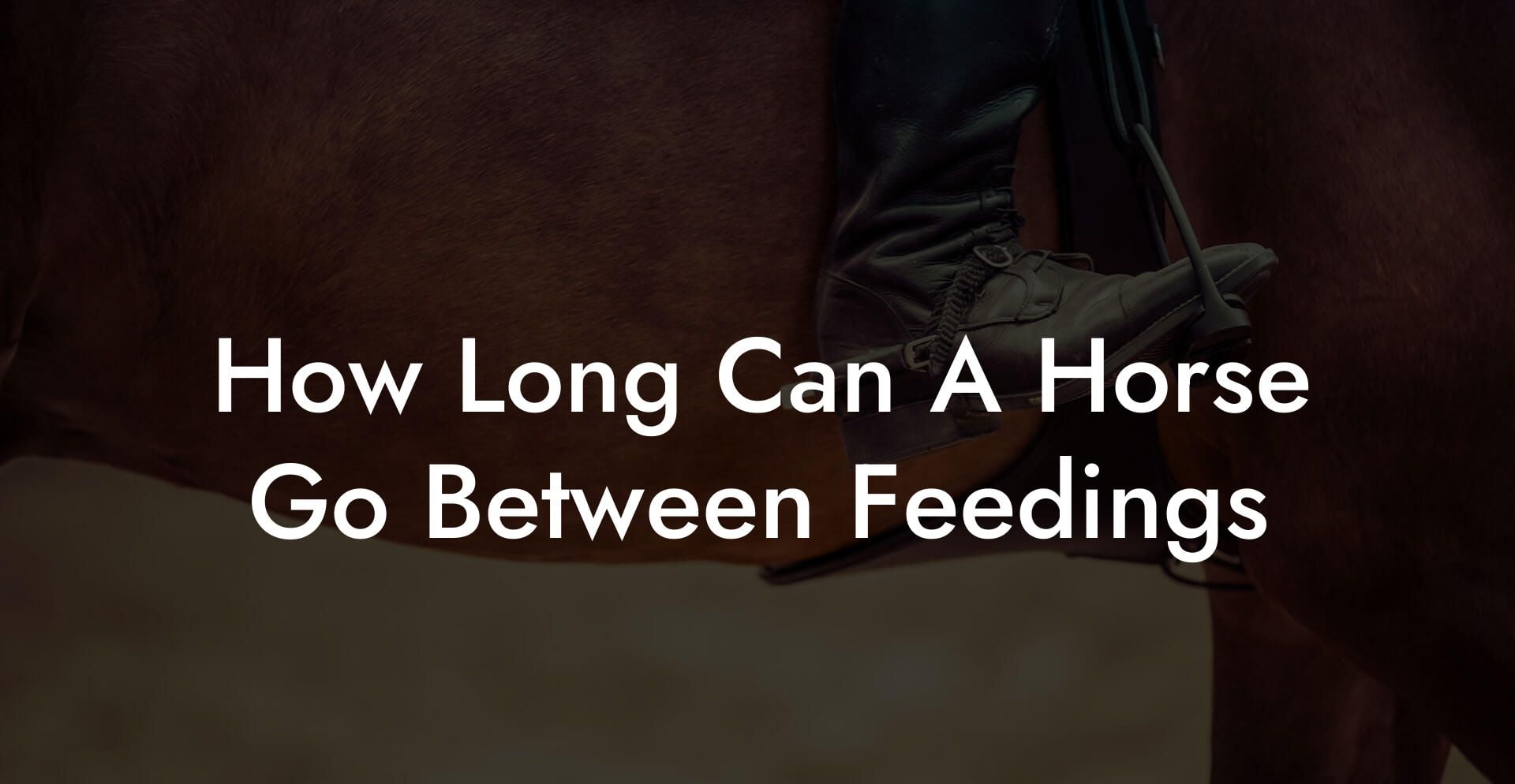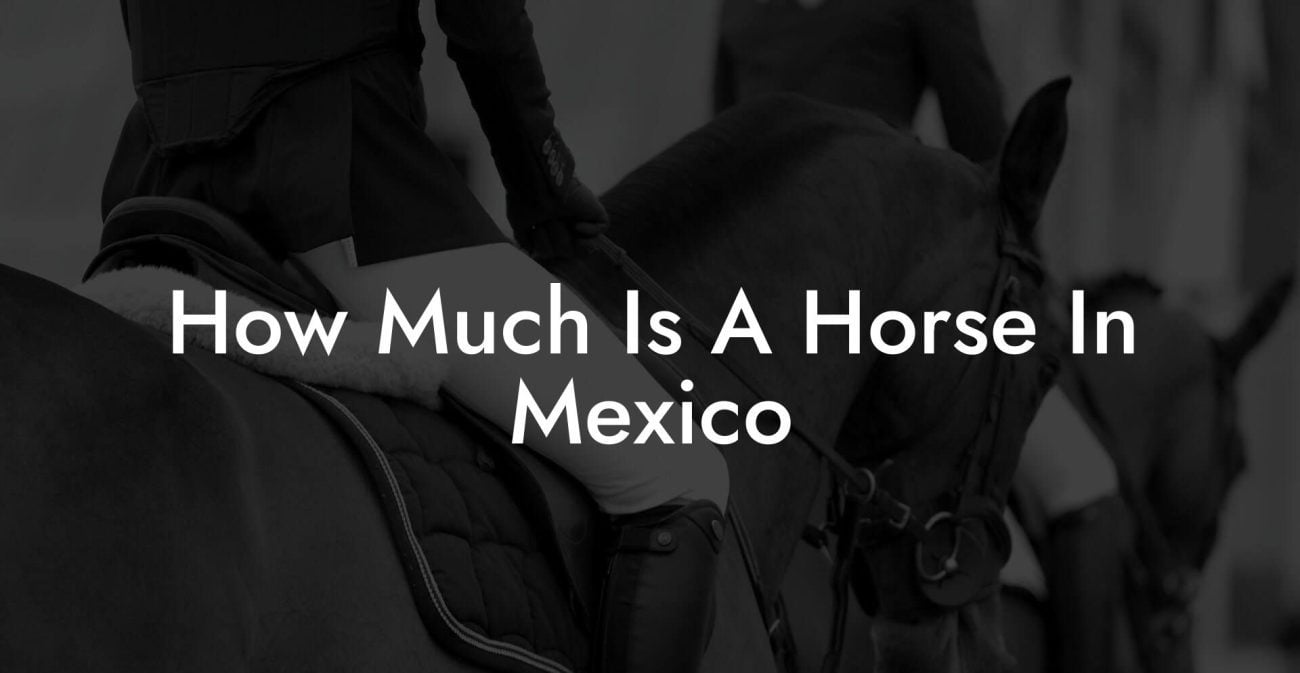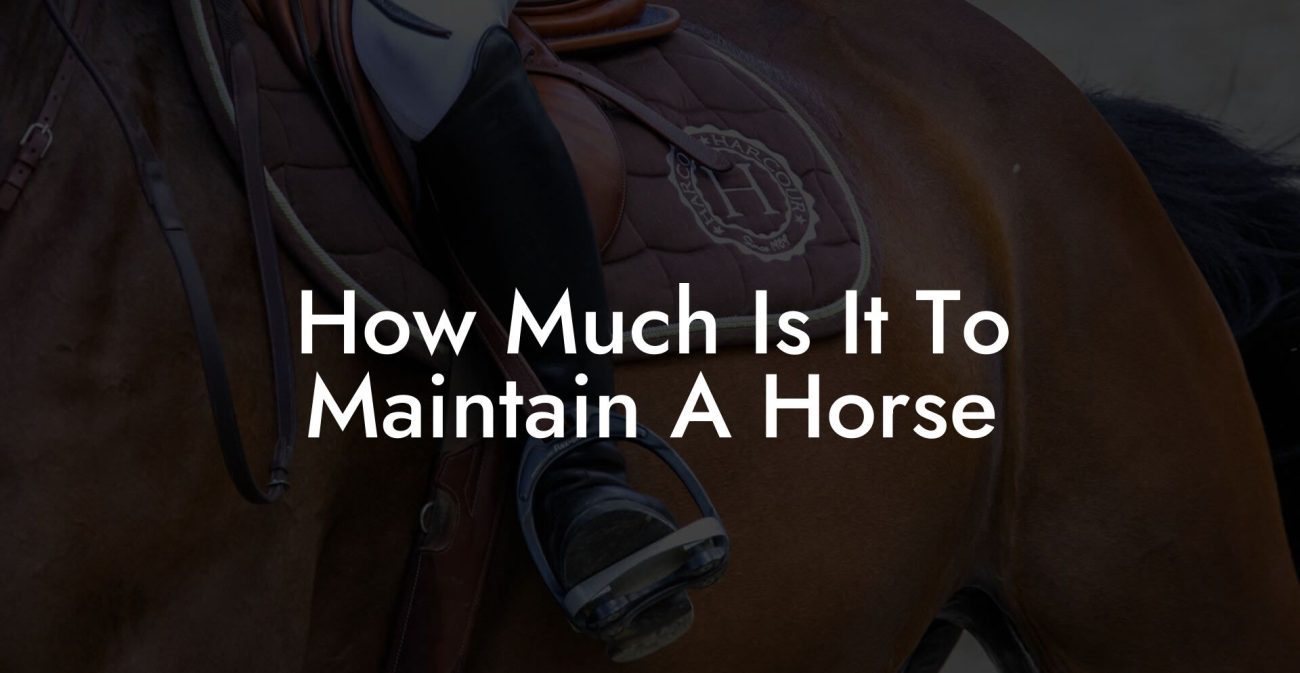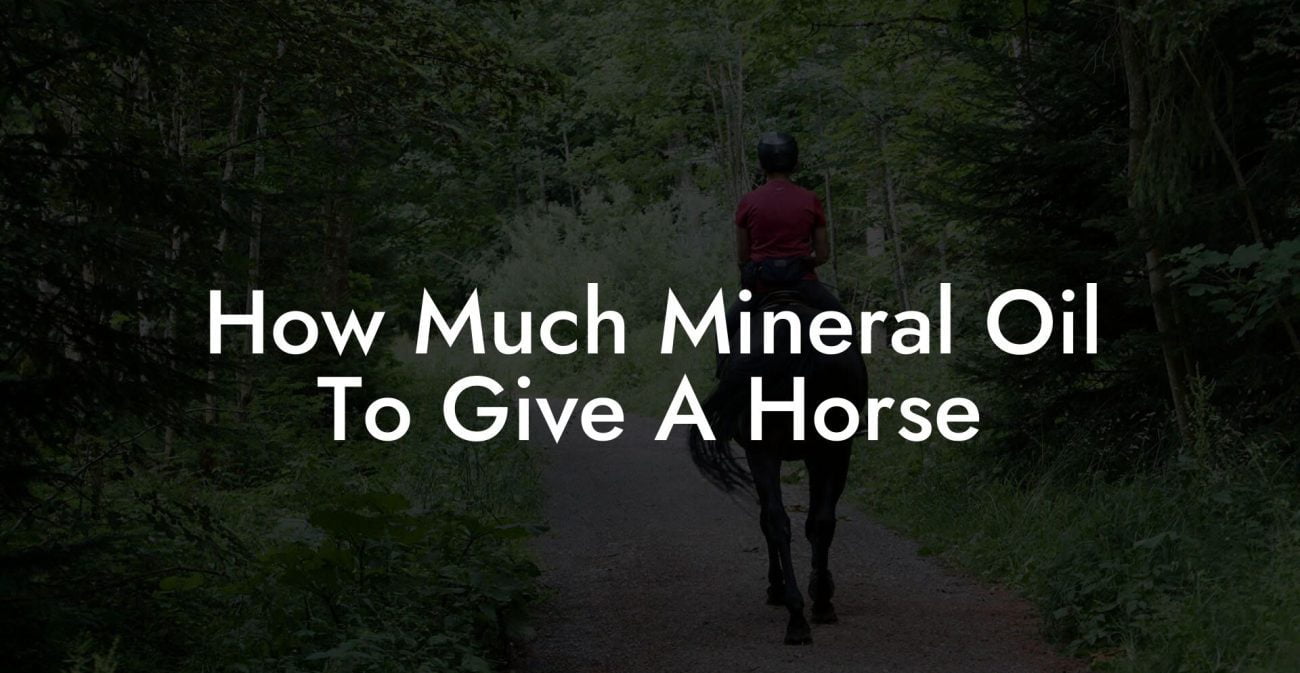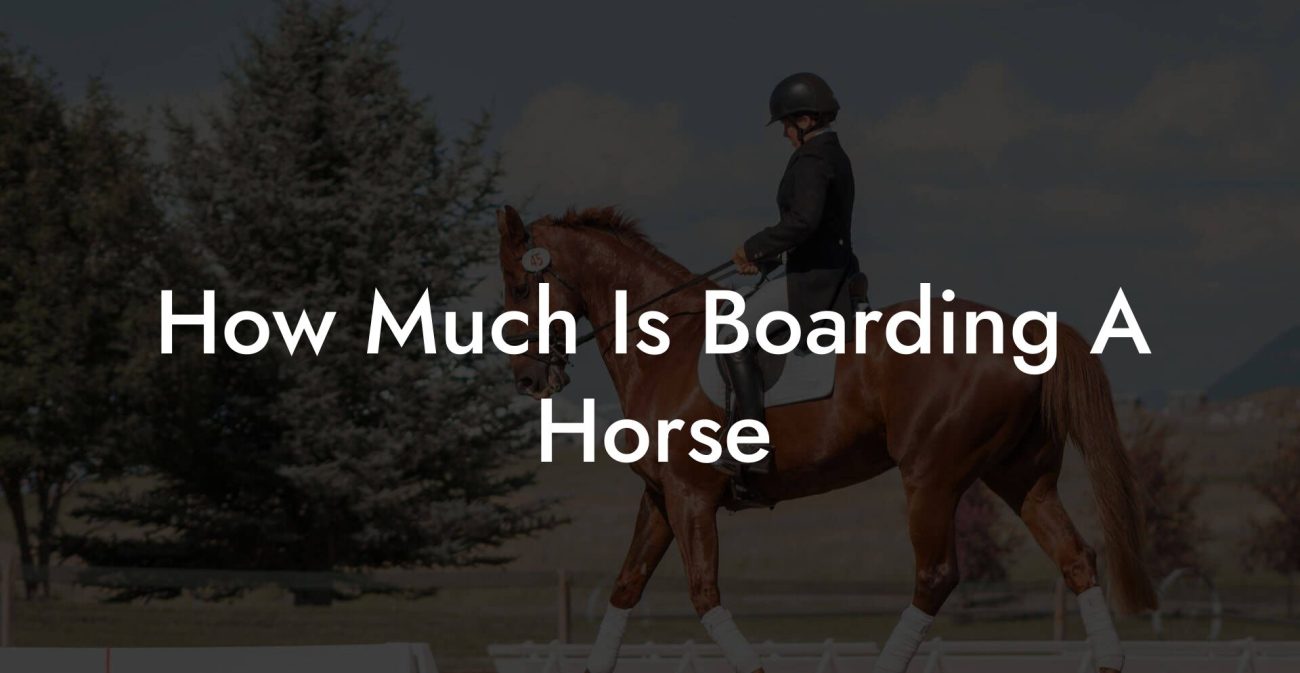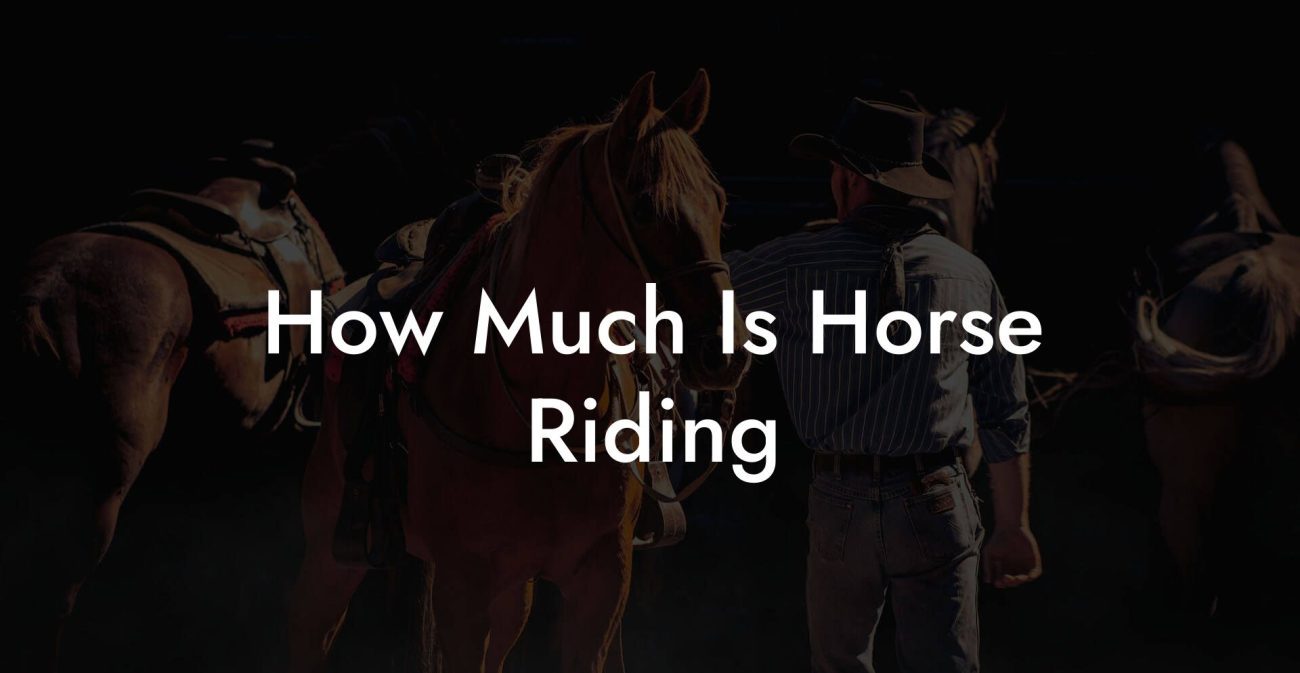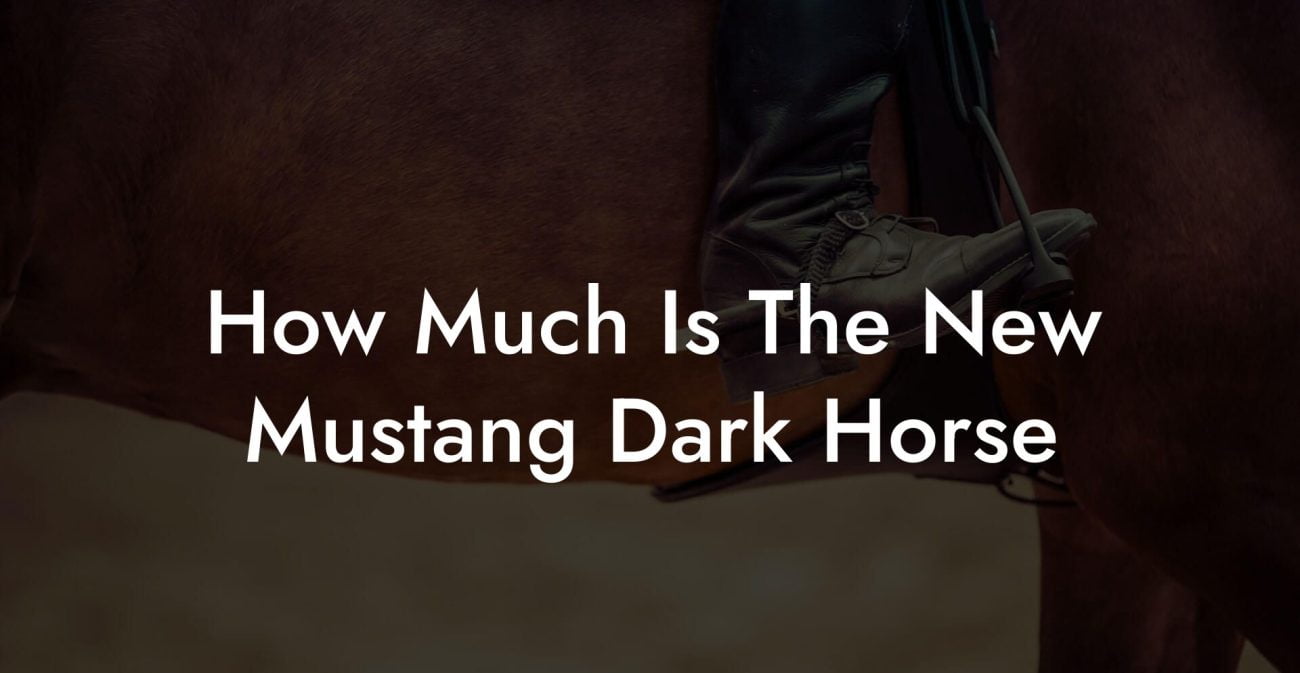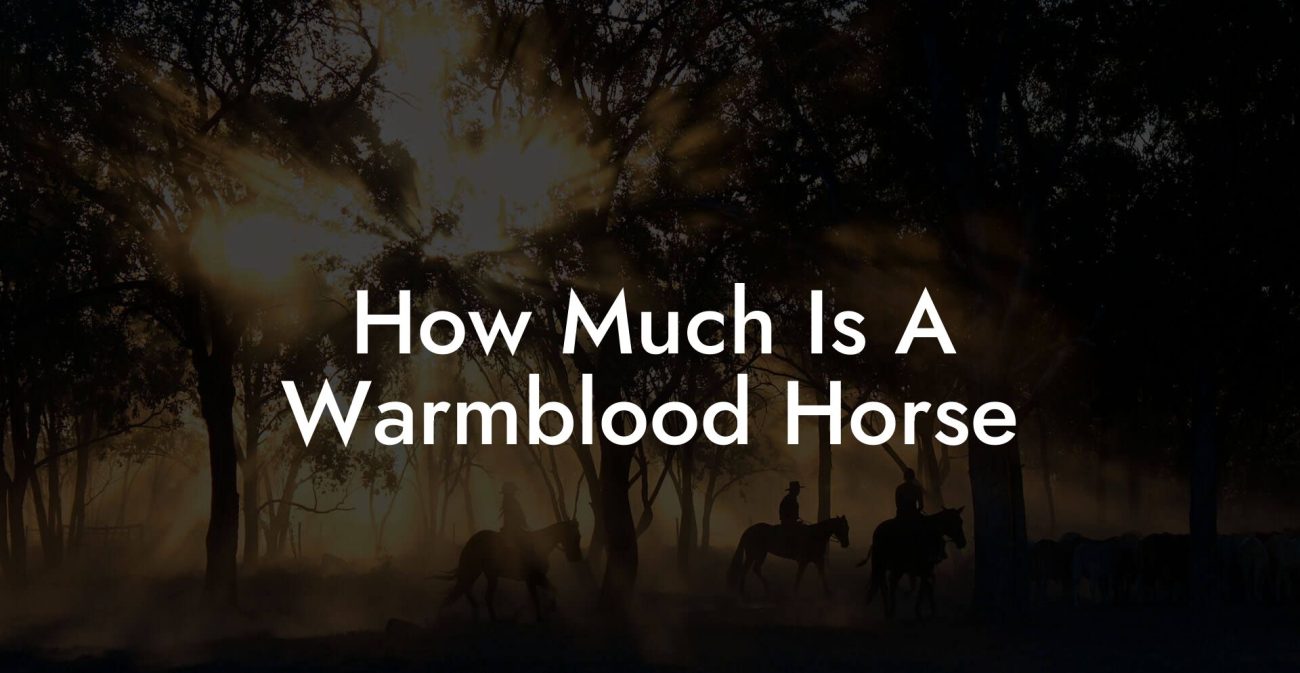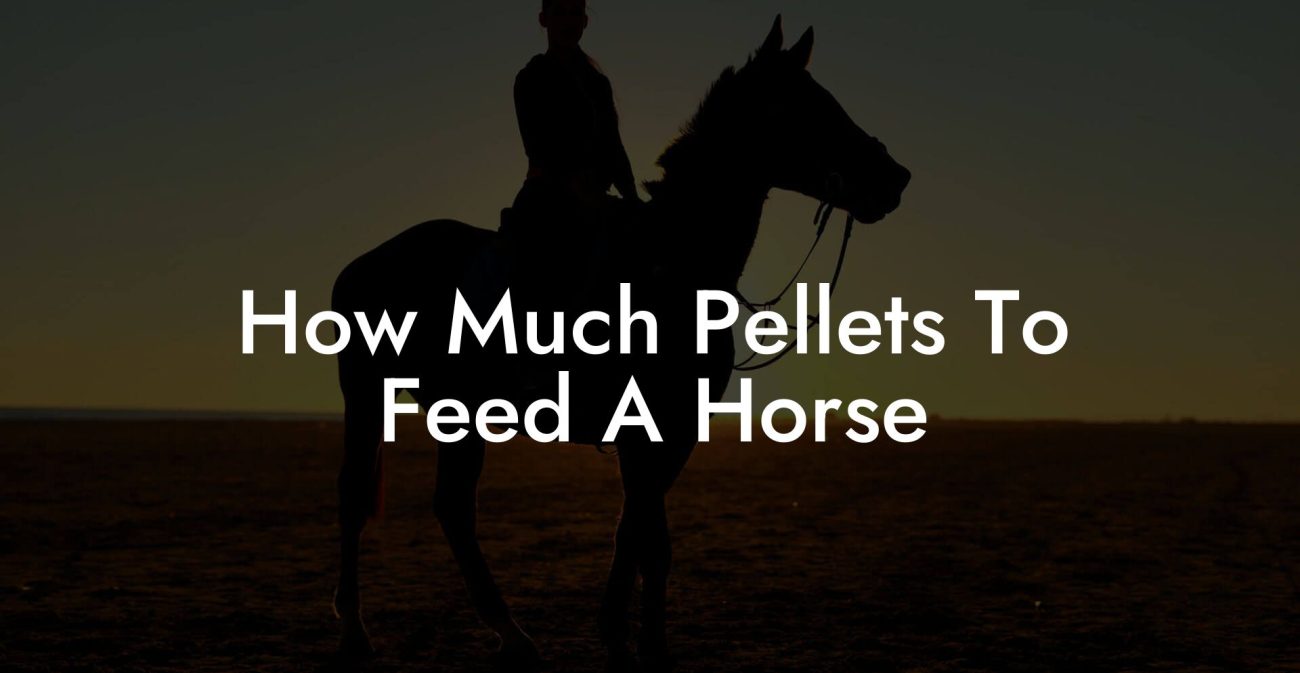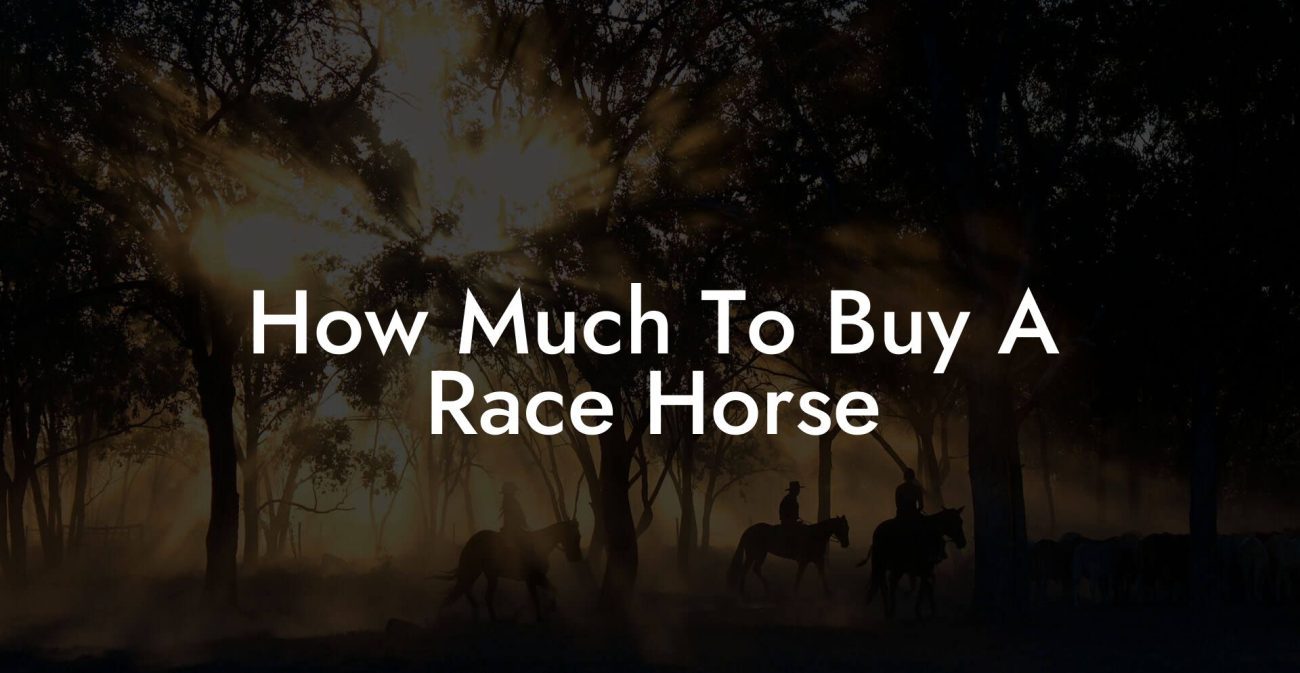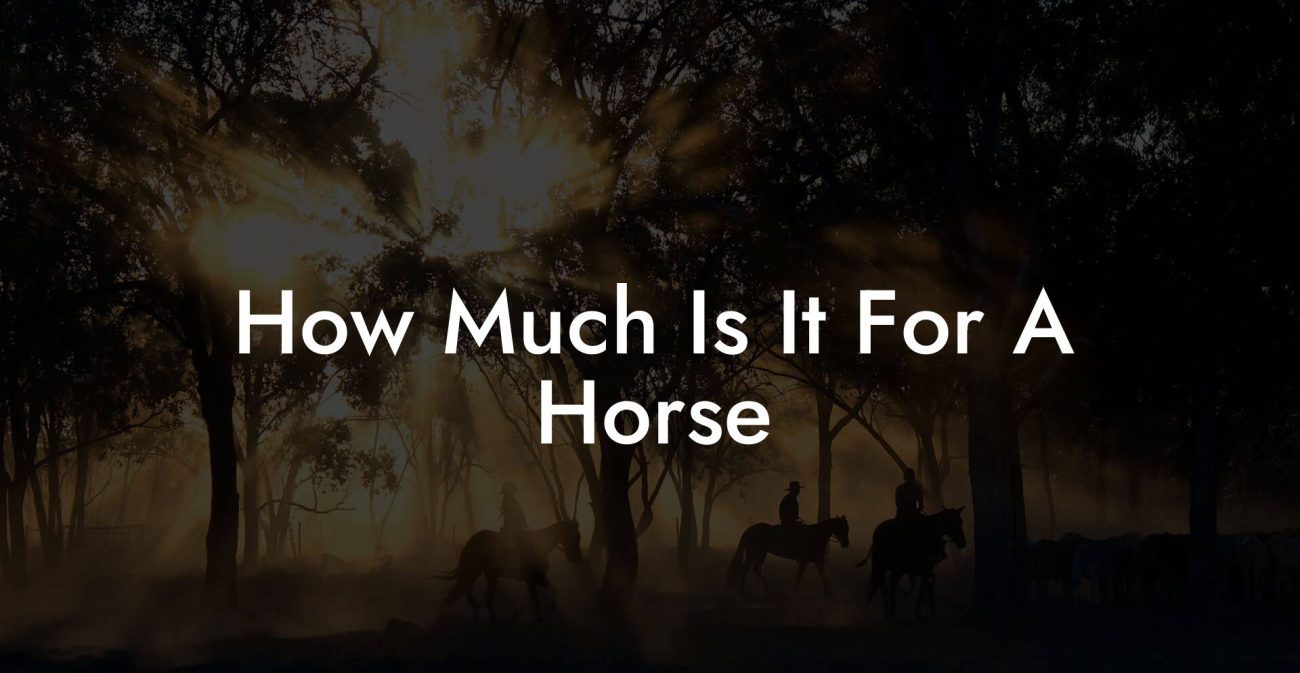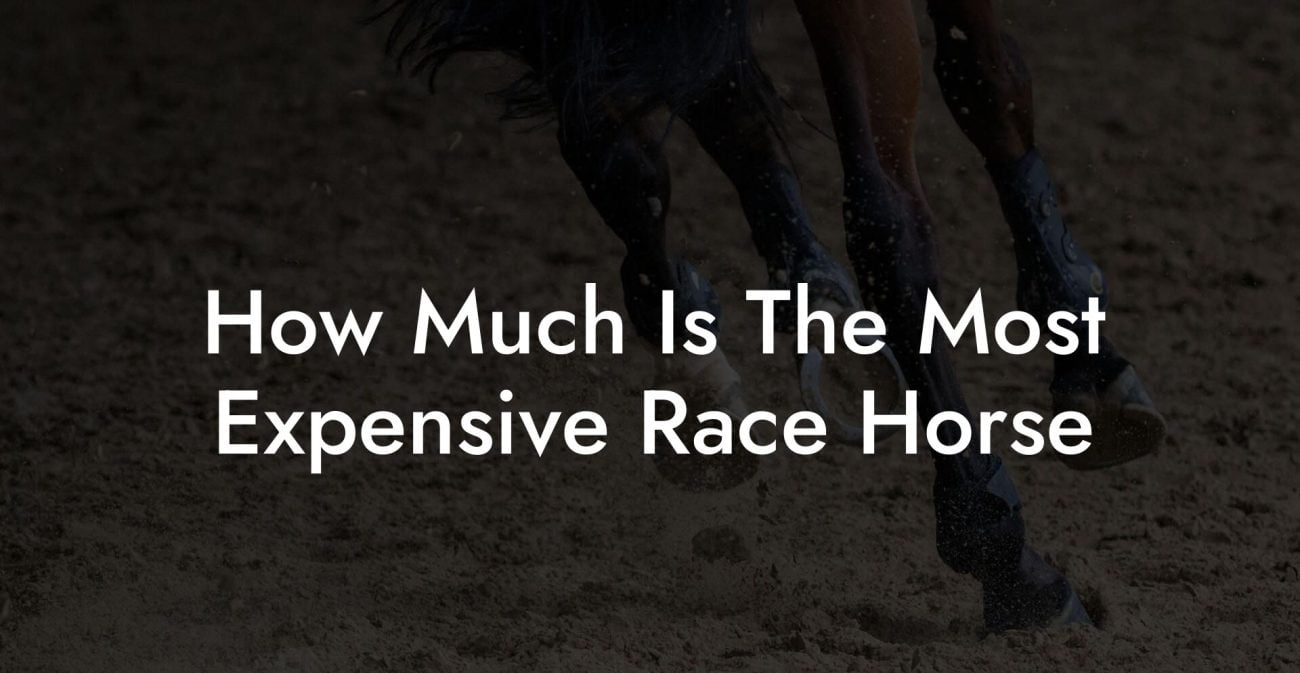Ever wondered if your majestic equine buddy could survive on a "fasting mode" like a trendy intermittent fasting influencer? Horses, those four-legged herbivores with hearts of gold and an appetite for endless grazing, have digestive systems that are as unique as a Gen-Z meme. In this deep dive, we unravel the fascinating question: how long can a horse go between feedings without turning into a hangry hay-eater? Buckle up for a wild ride through equine nutrition, feeding intervals, and the science behind those constant grazing habits, all wrapped up in a style that's as engaging and witty as your favorite TikTok thread.
Quick Links to Useful Sections
- Understanding the Equine Digestive System: The Marvel of the Mare
- The Role of Feedings in Equine health
- How Long Can a Horse Go Between Feedings?
- Factors Influencing Feeding Frequency
- Feed Type and Quality
- Horse’s Age and Condition
- Workload and Activity Level
- Environmental and Seasonal Influences
- Stress and Health Conditions
- Potential Health Risks of Prolonged Feeding Intervals
- Gastric Ulcers
- Colic
- Metabolic Imbalance
- Behavioral Changes
- Practical Feeding Strategies to Keep Your Horse Happy
- Multiple Small Meals
- Feed Timers and Automated Feeders
- Grain Mixes and Concentrates
- Trickle Feeding in Pasture
- Supplements and Digestive Aids
- Feeding Considerations for Special Circumstances
- Young Foals and Growing Horses
- Senior Horses and Those with Health Issues
- Transportation and Boarding Situations
- Monitoring Your Horse’s Health and Adjusting Feeding Times
- Observation is Key
- Weighing and Body Condition Scoring
- Consulting with a Veterinarian or Equine Nutritionist
- Adapting to Changes
- Modern Tools and Technologies to Optimize Feeding Schedules
- Automated Feeders and Smart Apps
- Wearable Health Monitors
- Data-Driven Insights
- Myth Busting: Separating Fact from Fiction in Equine Feeding
- Myth 1: Horses Can Easily Fast for 24 Hours or More
- Myth 2: More Feed Means More Energy
- Myth 3: Dry Hay is the Same as Fresh Grass
- Myth 4: All Horses Have the Same Feeding Schedule
- Integration of SEO Techniques in Equine Care Content
- Resources and Community Support: Your Next Steps
- Equine Nutrition Forums and Groups
- Workshops and Webinars
- Veterinary Consultations
- Equine Health Blogs and Podcasts
- Frequently Asked Questions About Horse Feeding Intervals
- Your Equine Feeding Journey: Embrace the Graze
Understanding the Equine Digestive System: The Marvel of the Mare
Horses are not your average mammals, they’re tricked out with a digestive system that’s headlined for its unique design and functionality. Unlike humans, who can survive on a couple of meals a day, horses are designed to graze almost continuously. Their digestive tract is built for efficiency, transforming fibrous grasses and hay into vital nutrients over many hours.
At the core of a horse’s digestive wizardry is the hindgut, which includes the cecum and colon. This dynamic duo ferments fibrous material, extracting energy and nutrients through a process similar to that of a well-curated vegan smoothie. Because horses are natural grazers, they’re programmed to be on the move, munching on small amounts of food almost all day. This continuous grazing habit helps keep their gut healthy, prevents ulcers, and maintains a balanced population of beneficial microbes.
While many horse owners might be tempted to switch up feeding routines with modern, hour-based schedules, it’s crucial to remember that our equine friends are not designed for scarcity. Their digestive system loves regular, small feedings, just like your smartphone craves a constant Wi-Fi connection.
The Role of Feedings in Equine health
When it comes to horse nutrition, feedings aren’t just about filling the belly, they’re about fueling a powerhouse of muscle, energy, and overall well-being. Feeding intervals play a major role in maintaining a horse’s digestive equilibrium, energy levels, and even mood. Think of it as the difference between snacking on avocado toast all day versus bingeing on a three-course meal that leaves you sluggish and sad.
For the everyday equine, constant grazing or multiple small feedings is the golden rule. Not only does this mimic their natural behavior in the wild, but it also helps prevent digestive upsets, like colic, a painful, and potentially serious, condition that can put a serious damper on your riding plans.
And let’s not forget water. A horse’s system is finely tuned to work best when it has constant access to fresh, clean water. Hydration helps food move smoothly through the digestive tract, preventing those pesky blockages and keeping the whole process running like a well-oiled machine.
How Long Can a Horse Go Between Feedings?
Alright, let’s get to the nitty-gritty: exactly how long can a horse go between feedings without compromising its health? The short answer is that horses thrive on frequent, modest intakes rather than a few large, infrequent meals.
In an ideal scenario, a horse should have access to forage (like pasture, hay, or a combination of both) for most of the day, even up to 18 hours! In circumstances where continuous grazing isn’t possible, experts generally recommend that horses be fed at least every 4 to 6 hours. This schedule approximates their natural rhythms and helps prevent spikes in blood sugar or digestive disturbances.
However, various factors can affect this interval:
- Type of Feed: Fresh pasture offers a different nutritional profile compared to dry hay. Grasses high in moisture might allow for a slightly longer interval, whereas dry hay typically requires a bit more regularity.
- Individual Metabolism: Just as humans vary in metabolism, so do horses. Some horses might show no signs of discomfort after a longer break, while others could develop issues like gastric ulcers.
- Workload and Age: Performance horses or those engaged in heavy physical activity often need more frequent energy boosts. Similarly, older horses and those with specific health conditions may have stricter dietary schedules.
- Environmental Factors: Temperature extremes, stress, and even seasonal changes can influence how quickly a horse digests its meal, thereby affecting optimal feeding intervals.
In summary, while a wild stallion might graze from dawn till dusk, our domesticated horses should ideally be fed in a manner that simulates that natural, continuous intake, even if that means strategically timing feedings throughout the day.
Factors Influencing Feeding Frequency
Aside from the basics of digestive anatomy, there are several key factors that dictate just how frequently you should feed your horse. By understanding these elements, you can fine-tune your horse’s feeding schedule for optimal health.
Feed Type and Quality
Not all feeds are created equal. High-quality hay that’s rich in fiber and low in sugar supports a slower, more consistent digestion process. Conversely, lower-quality or stale hay may lead to digestive upset and might require more cautious feeding practices.
Many modern equine enthusiasts are turning to a blend of traditional hay feeding combined with modern, nutrient-dense pellets or supplements that cater to specific needs like joint support or coat health. Integrating diverse feed types can keep the digestive system engaged and prevent boredom, yes, even horses can get tired of the same old hay!
Horse’s Age and Condition
Just like your favorite influencers evolve over time, so do the nutritional needs of a horse. Foals and young horses require more frequent, albeit smaller, meals to support their rapid growth and energy needs. Older horses, on the other hand, might need specially formulated feeds that are easier to digest, ensuring they get the nutrients they need without overburdening their aging digestive tract.
If your horse is recovering from an illness or injury, a vet might recommend smaller, more frequent meals to gently stimulate appetite and ensure smooth digestion.
Workload and Activity Level
Performance horses or those used in strenuous activities need more energy throughout the day. Just like a gamer needs a constant supply of energy drinks to keep playing, horses benefit from regular energy boosts. Feeding intervals may need to be adjusted for horses in heavy training to maintain optimal performance and recovery.
Conversely, a calm pasture pet might be fine with grazing at a natural pace, provided they have uninterrupted access to quality forage.
Environmental and Seasonal Influences
The environment plays a surprisingly big role in dictating feeding schedules. During the hot summer months, horses often drink more, and the high moisture content in fresh grass can compensate for less frequent feedings. In colder seasons, however, horses might require additional hay or supplemental feeds to generate body heat and meet their energy requirements.
Seasonal changes also affect pasture conditions. During droughts or frosty periods when fresh grass is scarce, a well-planned hay and grain feeding schedule becomes critical to maintaining health.
Stress and Health Conditions
Horses are sensitive creatures, and stress can wreak havoc on their digestive systems. Changes in routine, travel, or even social dynamics within the herd can lead to digestive upsets. If a horse experiences undue stress, it might need a more carefully monitored feeding schedule to prevent issues like colic or gastric ulcers.
Always consult with an equine nutritionist or veterinarian if stress or persistent health issues seem to correlate with feeding patterns.
Potential Health Risks of Prolonged Feeding Intervals
While the idea of a horse fasting for extended periods might sound like a tough-as-nails endurance challenge, the reality is that prolonged feeding intervals can lead to serious health hazards. Let’s break down some of the risks:
Gastric Ulcers
Horses produce stomach acid continuously, and without regular food intake to buffer this acid, they may develop gastric ulcers. These ulcers are not just metaphorical "bad vibes", they can cause significant pain, reduce appetite, and lead to weight loss.
Research shows that pasture grazing, which involves frequent and small meals throughout the day, helps maintain a neutral pH in the stomach, mitigating the risks of ulcer formation.
Colic
Colic refers to abdominal pain in horses, a condition that can rapidly escalate into a life-threatening emergency if not addressed promptly. One common trigger for colic is the sudden disruption of the normal digestive rhythm, which can occur when feeding intervals are too long.
A consistent feeding schedule, with small, regular meals, significantly reduces this risk by keeping the digestive tract busy and maintaining a stable passage of food.
Metabolic Imbalance
Just like erratic eating habits can wreak havoc on our metabolism (hello, sugar crash!), horses can experience metabolic disorders when their feeding schedule is thrown off balance. Extended periods without food can lead to unstable blood sugar levels and a heightened risk of insulin resistance, a condition that is not only concerning for performance horses but also for horses with a predisposition to metabolic syndrome.
Behavioral Changes
Have you ever seen a famished horse? It’s not just a dramatic sight, it’s an indicator that something is off. Just like a grouchy teenager, a horse that hasn’t eaten for too long may display irritability, hyperactivity, or even aggressive behavior. This not only affects the horse’s well-being but can also pose challenges in handling and training.
Monitoring your horse’s behavior and adapting feeding intervals accordingly is key to managing its overall health.
Practical Feeding Strategies to Keep Your Horse Happy
Alright, so we know that horses are built for continuous grazing and that extended periods without food can spell trouble. But what can you do if you’re faced with practical challenges like limited pasture time, or if you need to transport your horse and can’t serve a meal every four hours? Here are some strategies that blend modern practicality with equine instincts:
Multiple Small Meals
Perhaps the simplest strategy is to split the daily ration into multiple small meals. Instead of feeding large portions twice a day, consider three to four smaller meals. This mirrors natural grazing behavior, helps stabilize digestion, and prevents that dreaded "hangry" look in your horse's eyes.
Feed Timers and Automated Feeders
For the tech-savvy horse owner, automated feeders can be a game changer. These smart devices can dispense measured amounts of feed at predetermined intervals, ensuring that your horse gets a consistent flow of nourishment, even if you’re not around to manually serve it.
With automated feeders, you can avoid the stress of manual feeding while keeping your horse’s digestive system on track.
Grain Mixes and Concentrates
Depending on the horse’s workload and nutritional needs, incorporating specially formulated grain mixes or concentrates can supplement the traditional diet. These feeds are designed to deliver energy quickly and efficiently, ideal for horses in training or those working heavy-duty jobs.
Remember, however, that these should complement, not replace, a forage-based diet. Too many concentrates can disrupt the delicate balance of the equine digestive system.
Trickle Feeding in Pasture
If your horse has access to a pasture, consider the practice of trickle feeding by introducing hay nets or slow feeders. These tools encourage constant grazing and mimic the natural feeding behavior of horses. By slowing down the consumption rate, you not only extend the feeding period but also reduce the risk of digestive overload.
Supplements and Digestive Aids
For horses with sensitive stomachs or those prone to ulcers and colic, various supplements and digestive aids can be added to the diet. Probiotics, prebiotics, and specially formulated digestive enzymes help maintain a balanced gut flora and improve nutrient absorption.
As with any supplement, it’s essential to consult with your veterinarian to ensure that it’s suitable for your horse’s specific needs.
Feeding Considerations for Special Circumstances
Not every horse fits into the standard feeding schedule. Let’s take a look at some special circumstances that may require a tailored approach.
Young Foals and Growing Horses
Foals and young horses are on a rapid growth trajectory, and their nutritional needs are sky-high. They require frequent feeding in small quantities to support healthy growth and development. A balanced blend of mare’s milk (or a quality milk replacer for orphaned foals) with gradual introduction to solid forage is critical.
Too long between feedings can hinder their growth and lead to nutrient deficiencies. Even in a busy pasture, ensure these little ones have constant access to high-quality forage and, if needed, supplemental feeds.
Senior Horses and Those with Health Issues
As horses age, their digestive efficiency may decline, and dental issues can interfere with their ability to process dry feeds. Older horses often benefit from softer, more easily digestible feeds. Consider soaking hay to make it more palatable or offering specially formulated senior horse feed that provides additional nutrients without being too harsh on their digestive system.
Additionally, horses recovering from surgery or dealing with chronic health issues require a more hands-on feeding approach, with frequent checks to ensure they are maintaining a healthy weight and receiving adequate nutrition.
Transportation and Boarding Situations
Sometimes, it’s not you but the situation that dictates a change in feeding routines. When your horse is traveling or boarding at a facility with a pre-determined schedule, it’s important to communicate your horse’s dietary needs. Some horses can handle a minor disruption in feeding times, while others may be more sensitive and require temporary adjustments.
In these cases, carry along supplementary feeds like portable hay bags or consult with the boarding facility to see if feeding times can be adjusted. Always keep an open line of communication to ensure that your horse’s diet remains uninterrupted, even away from home.
Monitoring Your Horse’s Health and Adjusting Feeding Times
Knowledge is power, and monitoring your horse’s health is key to determining whether the current feeding schedule is working or if it needs a tweak. Here are a few tips on how to keep track:
Observation is Key
Regularly check for signs of discomfort or digestive upset. Changes in behavior, loss of appetite, or unusual stool consistency could signal that your horse is experiencing issues from prolonged gaps in feeding. Notice those little hints, just as you would watch your favorite YouTube vlogs for trends.
Weighing and Body Condition Scoring
Periodically assess your horse’s body condition score (BCS). A balanced BCS indicates that the feeding routine is meeting the nutritional needs. Sudden weight loss or gain may suggest that adjustments are required in the quantity or frequency of feedings.
Consulting with a Veterinarian or Equine Nutritionist
There's no substitute for expert advice. Regular checkups and consultations with professionals can catch potential issues early on and provide a clear, customized strategy for your horse’s unique needs. A simple phone call can be as refreshing as a DM from your best mate.
Adapting to Changes
As seasons change, so do your horse’s needs. Be flexible and ready to adjust feeding times, types of feed, or even feeding methods as necessary. What works perfectly in the spring might need a little tweaking come winter.
Consistent monitoring and a willingness to adapt are your best tools in ensuring that your horse remains happy, healthy, and ready to gallop through life.
Modern Tools and Technologies to Optimize Feeding Schedules
In the age of digital everything, from dating apps to smart home devices, why should feeding schedules be stuck in the past? Modern equine care has embraced technology to help manage and optimize feeding routines.
Automated Feeders and Smart Apps
Imagine having a smart feeder that knows exactly when and how much to dispense, all while syncing with your smartphone. This is the new frontier in equine management. Automated feeders can be programmed to release small portions of feed at regular intervals, mimicking a natural grazing schedule and freeing up your time for more important things, like scrolling through niche equine memes.
Wearable Health Monitors
Yes, horses can wear Fitbits too! Wearable technology is becoming increasingly popular in monitoring a horse’s activity levels, heart rate, and overall stress levels. These gadgets help owners track if disruptions in the feeding schedule are having any unintended consequences on performance and well-being.
Data-Driven Insights
With access to real-time data on your horse's health, you can quickly notice trends that may require a change in the feeding regimen. Many equine owners now use dedicated apps that analyze feeding habits, physical activity, and even weather conditions to recommend the best feeding times and types.
Incorporating these digital tools not only eases the management burden but also empowers you with insights that were unthinkable just a few short years ago.
Myth Busting: Separating Fact from Fiction in Equine Feeding
In the era of online forums and viral TikTok challenges, equine care is no stranger to myths and misinformation. Let’s break down some of the most common myths about how long a horse can go between feedings.
Myth 1: Horses Can Easily Fast for 24 Hours or More
While horses are remarkably resilient, expecting them to thrive without food for a whole day is risky business. Their entire digestive system is designed for constant grazing, and extended fasting can lead to serious health issues like colic and ulcers. Sure, they might be able to survive a 24-hour fast in extreme situations, but it’s definitely not ideal for long-term health.
Myth 2: More Feed Means More Energy
More isn’t always better. Overfeeding, especially in one large meal, can overwhelm the digestive system, leading to bloat and insulin spikes. A balanced, moderate approach is the secret sauce to keeping your horse’s engine running smoothly.
Myth 3: Dry Hay is the Same as Fresh Grass
Though both serve as forage sources, the moisture content and nutrient profile can differ significantly. Fresh grass, with its high moisture content, is more similar to a natural, continuous grazing experience. Dry hay, while nutritious, requires more frequent intervals to maintain digestive harmony.
Myth 4: All Horses Have the Same Feeding Schedule
Every horse is as unique as your favorite sneaker drop. Factors like age, workload, breed, and health status mean that feeding schedules should be personalized. There is no one-size-fits-all approach in the equine world.
Dispelling these myths is crucial to embracing a smart, science-backed approach to managing your horse’s diet. When in doubt, lean on research and consult with your equine nutrition expert!
Integration of SEO Techniques in Equine Care Content
Now, before you ride off into the sunset wondering if all this feeding know-how will help your horse become the next viral sensation, let’s talk about why this content is so meticulously crafted. In today’s digital age, strategic keyword clustering, featuring terms like "equestrian nutrition," "horse feeding schedule," "equine digestive system," and "forage management", ensures that the content is not only engaging and informative but also optimized for modern search engines. This holistic approach not only answers your questions but ensures that when you search for equine care tips, you find trusted, in-depth insights tailored for a new-gen audience.
Whether you’re a seasoned equestrian or a novice just getting started, the goal remains the same: keep your horse’s belly happy, its gut thriving, and its spirit as high as your weekend festival vibes.
Resources and Community Support: Your Next Steps
Ready to take your horse care game to the next level? You’re not alone on this journey. Here are some actionable resources and community support channels to keep you informed and empowered:
Equine Nutrition Forums and Groups
From active Facebook communities to dedicated subreddits, countless online groups offer a space to share insights, questions, and personal experiences. Connect with other horse enthusiasts who are navigating similar challenges and learn about innovative feeding strategies.
Workshops and Webinars
Keep an eye out for virtual workshops and webinars hosted by equine nutritionists and veterinarians. These sessions provide cutting-edge insights into best practices for feeding schedules, nutritional supplements, and health monitoring techniques.
Veterinary Consultations
Don’t underestimate the power of professional advice. Regular consultations with your veterinarian or an equine nutrition specialist can help tailor a feeding plan that’s uniquely optimized for your horse’s needs. Their expertise can provide personalized adjustments that ensure sustained wellness.
Equine Health Blogs and Podcasts
For those who love to consume information on the go, check out reputable equine health blogs and podcasts. They offer a mix of expert interviews, case studies, and the latest research findings that can help refine your feeding routines and overall care strategies.
Stepping into the world of equine nutrition isn’t just about following a schedule, it’s about embracing a community of horse lovers, staying informed with the latest research, and making smart, heartfelt decisions for your horse’s well-being.
Dive in, connect, ask questions, and share your successes. After all, every great journey begins with a single step, or, in this case, a single scoop of high-quality hay.
Frequently Asked Questions About Horse Feeding Intervals
Below are some of the most common questions horse owners have regarding feeding intervals and equine nutrition. We’ve integrated detailed answers along with rich FAQ schema markup to help you find reliable, search-engine-friendly insights right away.
1. How long can a healthy horse go between feedings?
Ideally, horses should have access to forage for 18 hours a day. In managed feeding scenarios, small meals every 4 to 6 hours work best to mimic natural grazing patterns and prevent digestive disturbances.
2. What happens if a horse is fasted for too long?
Extended fasting can lead to several health issues, including colic, gastric ulcers, and metabolic imbalances. The continuous production of stomach acid without sufficient food to buffer it is the primary culprit.
3. Can I feed my horse a big meal once a day instead of multiple small feedings?
While it is possible, it is not advisable. Horses are designed to graze continuously, and providing one large meal can overwhelm their digestive system and potentially lead to serious conditions like colic.
4. How do environmental factors influence feeding schedules?
Temperature, pasture availability, and seasonal changes all affect a horse’s digestive rate and energy needs. During hot weather, horses might receive sufficient hydration from fresh grass, whereas colder months often require additional hay supplementation.
5. Are automated feeders beneficial in managing feeding intervals?
Yes, automated feeders are excellent for maintaining consistent feeding intervals and ensuring that horses receive regular, measured portions even when owners are not present.
6. What special feeding considerations are there for young or senior horses?
Young, growing horses need more frequent, nutrient-rich small meals, while older horses benefit from softened or specially formulated feeds that are easier to digest.
For more personalized advice, it’s always best to consult with a professional in equine nutrition.
Your Equine Feeding Journey: Embrace the Graze
The road to mastering your horse’s feeding schedule might feel as winding as an epic trail ride, but remember: every step you take is a step toward greater health and vitality for your equine companion. From understanding the marvel of the equine digestive system to implementing practical strategies with a touch of modern tech, every insight here is designed to help you make informed, compassionate decisions.
Embrace the natural rhythms of your horse's grazing habits and let scientific research guide your feeding plan. Whether you’re tweaking small details or overhauling your entire approach, every adjustment makes a difference, much like finding that hidden gem of a café in your favorite city.
Stay curious, stay connected with the community, and never hesitate to experiment responsibly with your horse’s feeding routine. After all, the path to equine well-being is about blending traditional practices, modern innovations, and a healthy dose of humor and passion.
So go ahead, celebrate every fresh bale of hay, every measured scoop of feed, and every satisfied nibble as part of an ongoing journey. Your horse’s health is a testament to your commitment, creativity, and the endless possibilities in equine care. Happy grazing, and may your journey be as smooth as a wind-swept trail on a sunny day!

